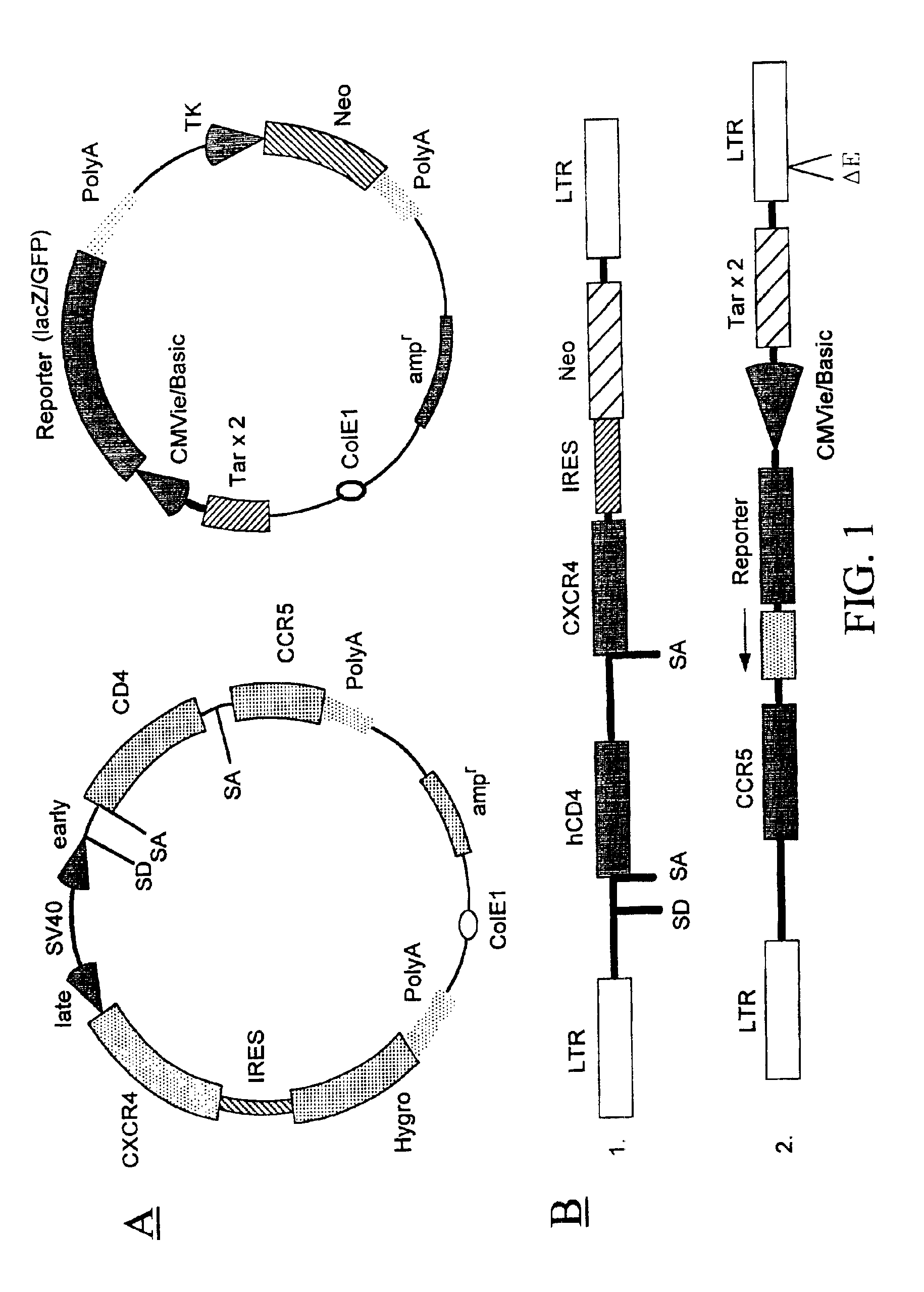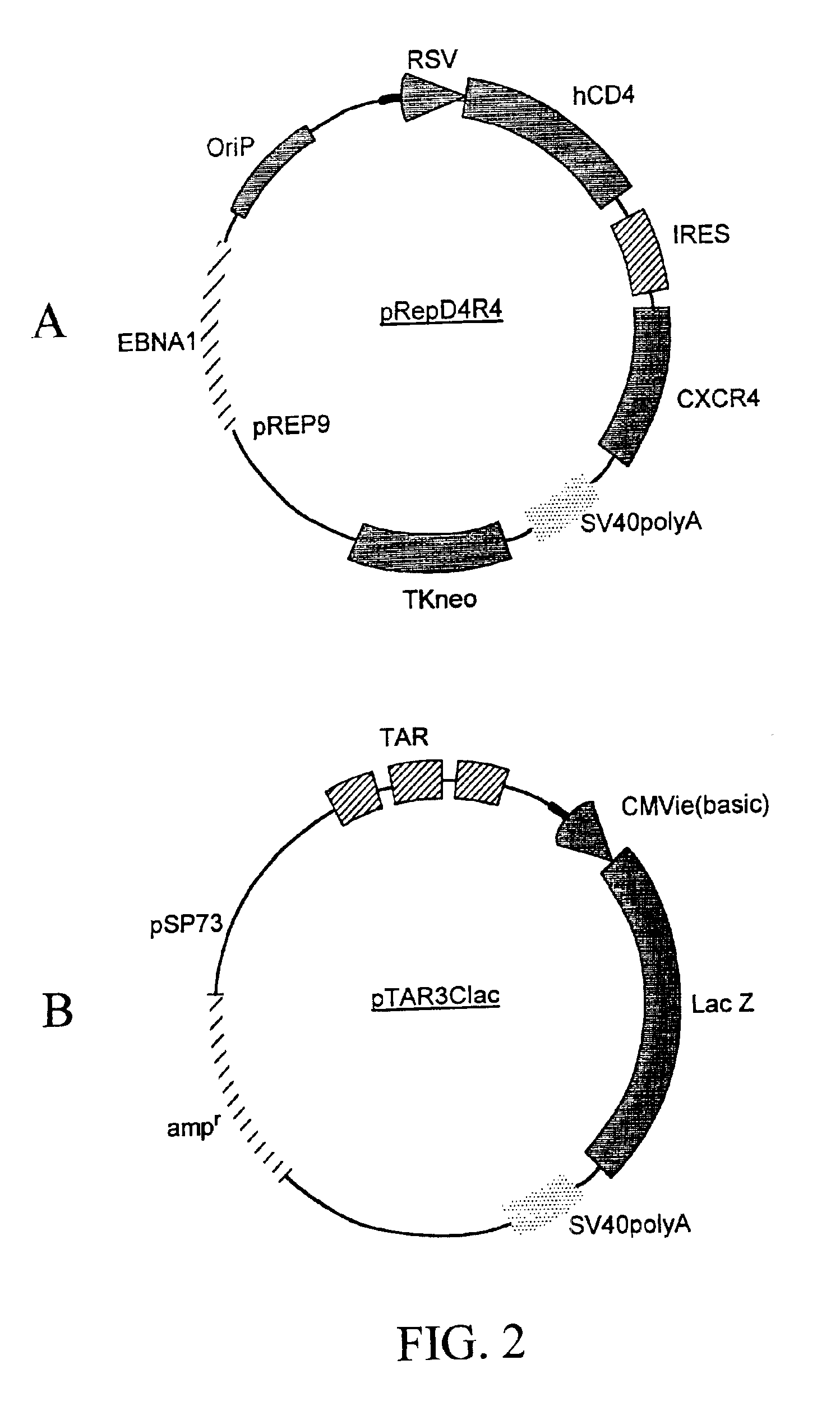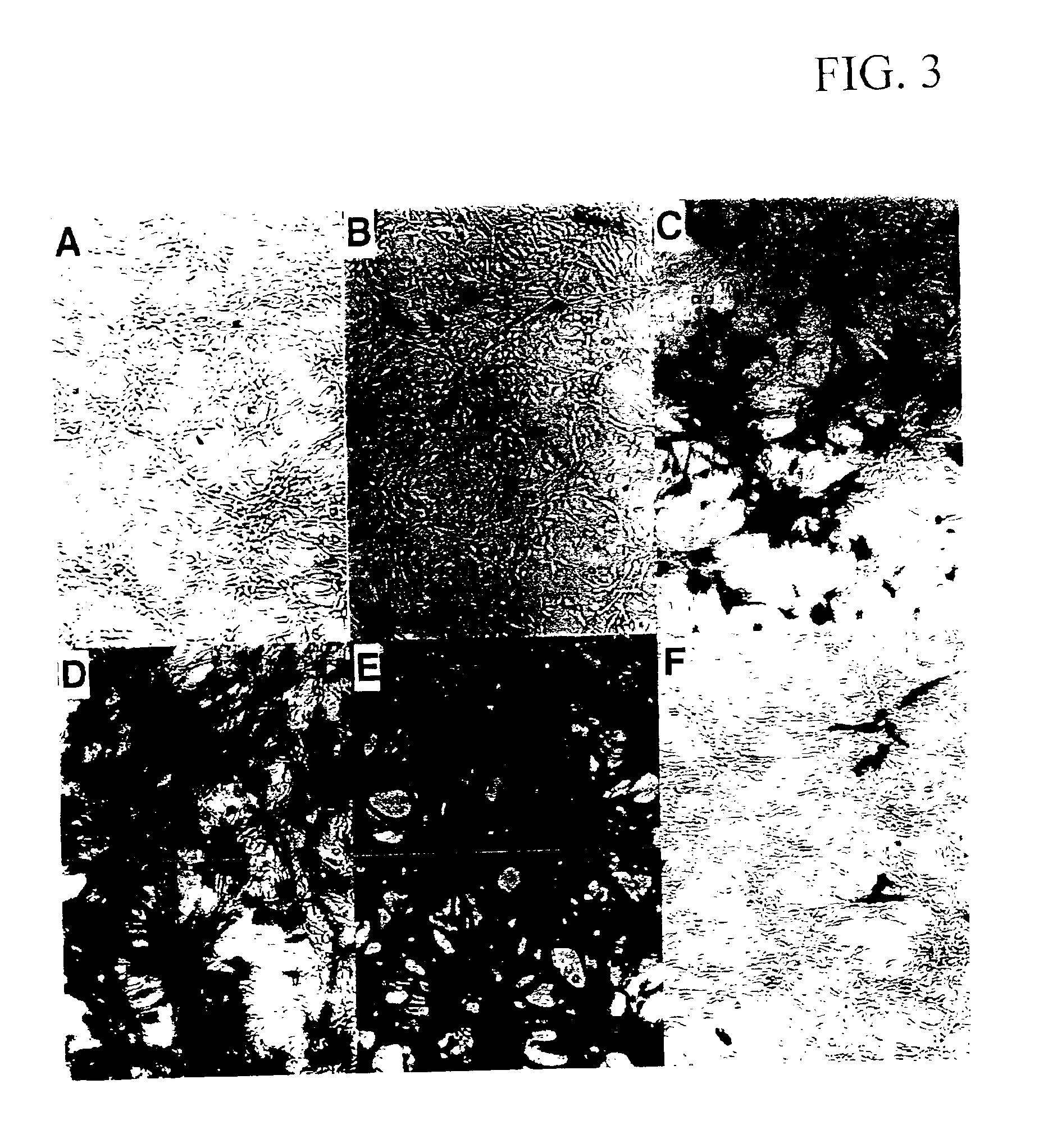Methods of monitoring HIV drug resistance
a technology of hiv drug resistance and cell lines, applied in the introduction process of vector-based foreign material, antibody medical ingredients, other foreign material introduction processes, etc., can solve the problems of neoplastic growth and eventual death, opportunistic infections, neurological diseases, etc., and achieve the effect of facilitating productive infection
- Summary
- Abstract
- Description
- Claims
- Application Information
AI Technical Summary
Benefits of technology
Problems solved by technology
Method used
Image
Examples
example
1. Productive Infection of Recombinant HeLa Cells with HIV Virus
[0159]A recombinant cell line was established from human cervical cancer HeLa cells. The HeLa cells were cotransfected with an expression vector (pRepD4R4) and a vector (pTAR3Clac) at a 1:1 ratio. As shown in FIG. 2A the expression vector pRepD4R4 includes CD4 receptor and CXCR4 receptor genes that are separated by an IRES sequence. As shown FIG. 2B the vector pTAR3Clac includes a reporter sequence comprising a promoter region that includes three copies of TAR sequences and a CMV basic promoter, and a lacZ reporter gene whose expression is under the control of the promoter. The stably-transfected cells were selected by culturing in medium containing G418 at 900 μg / ml. Each clone of the cells selected was subsequently cultured in duplicates, and one of the duplicates was infected with a low titer HIV stock solution. The low-titer HIV stock was collected from supernatant of a HeLa cell culture that was transfected with a ...
PUM
| Property | Measurement | Unit |
|---|---|---|
| HIV drug resistance | aaaaa | aaaaa |
| cell surface | aaaaa | aaaaa |
| drug resistance | aaaaa | aaaaa |
Abstract
Description
Claims
Application Information
 Login to View More
Login to View More - R&D
- Intellectual Property
- Life Sciences
- Materials
- Tech Scout
- Unparalleled Data Quality
- Higher Quality Content
- 60% Fewer Hallucinations
Browse by: Latest US Patents, China's latest patents, Technical Efficacy Thesaurus, Application Domain, Technology Topic, Popular Technical Reports.
© 2025 PatSnap. All rights reserved.Legal|Privacy policy|Modern Slavery Act Transparency Statement|Sitemap|About US| Contact US: help@patsnap.com



